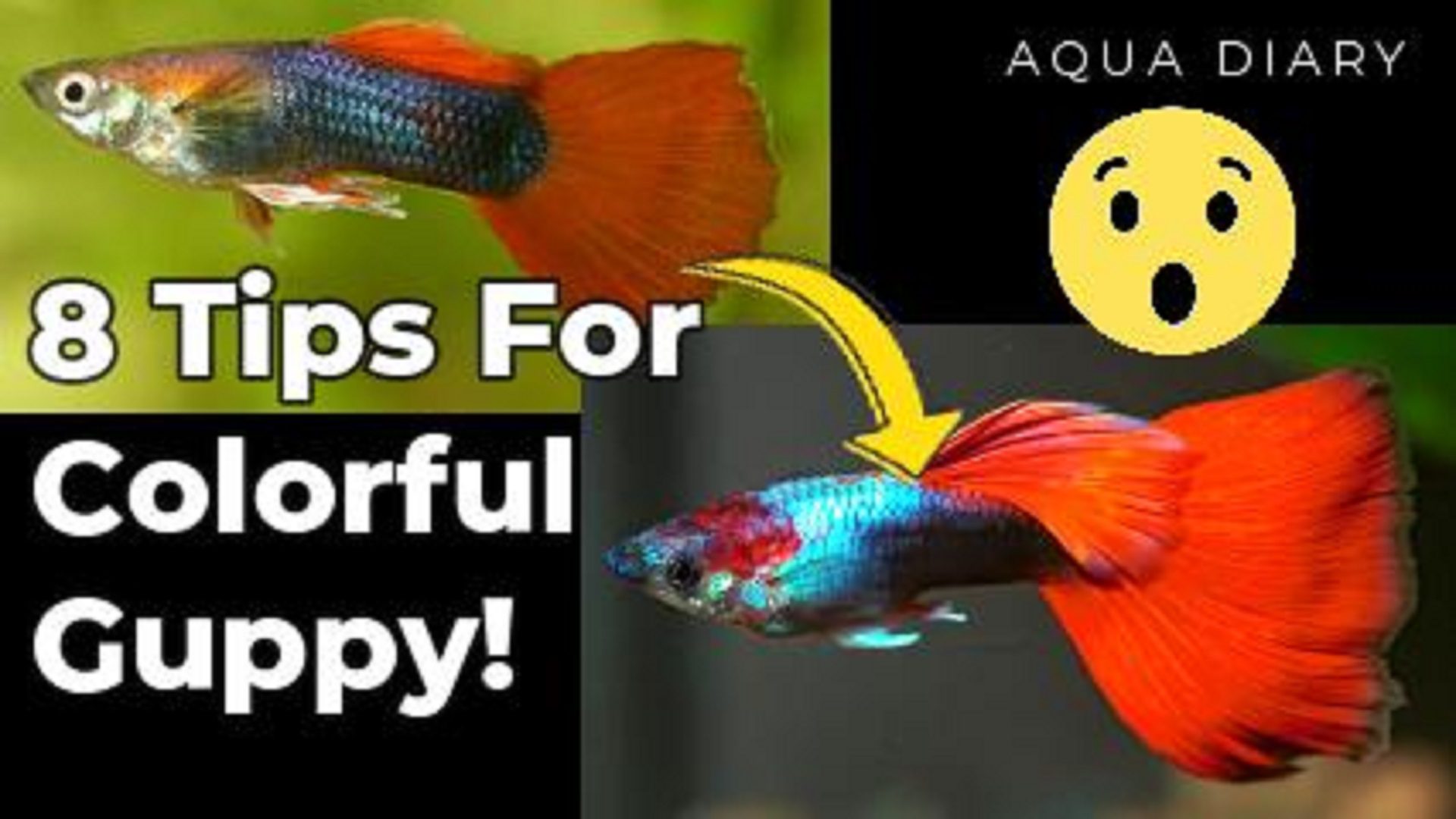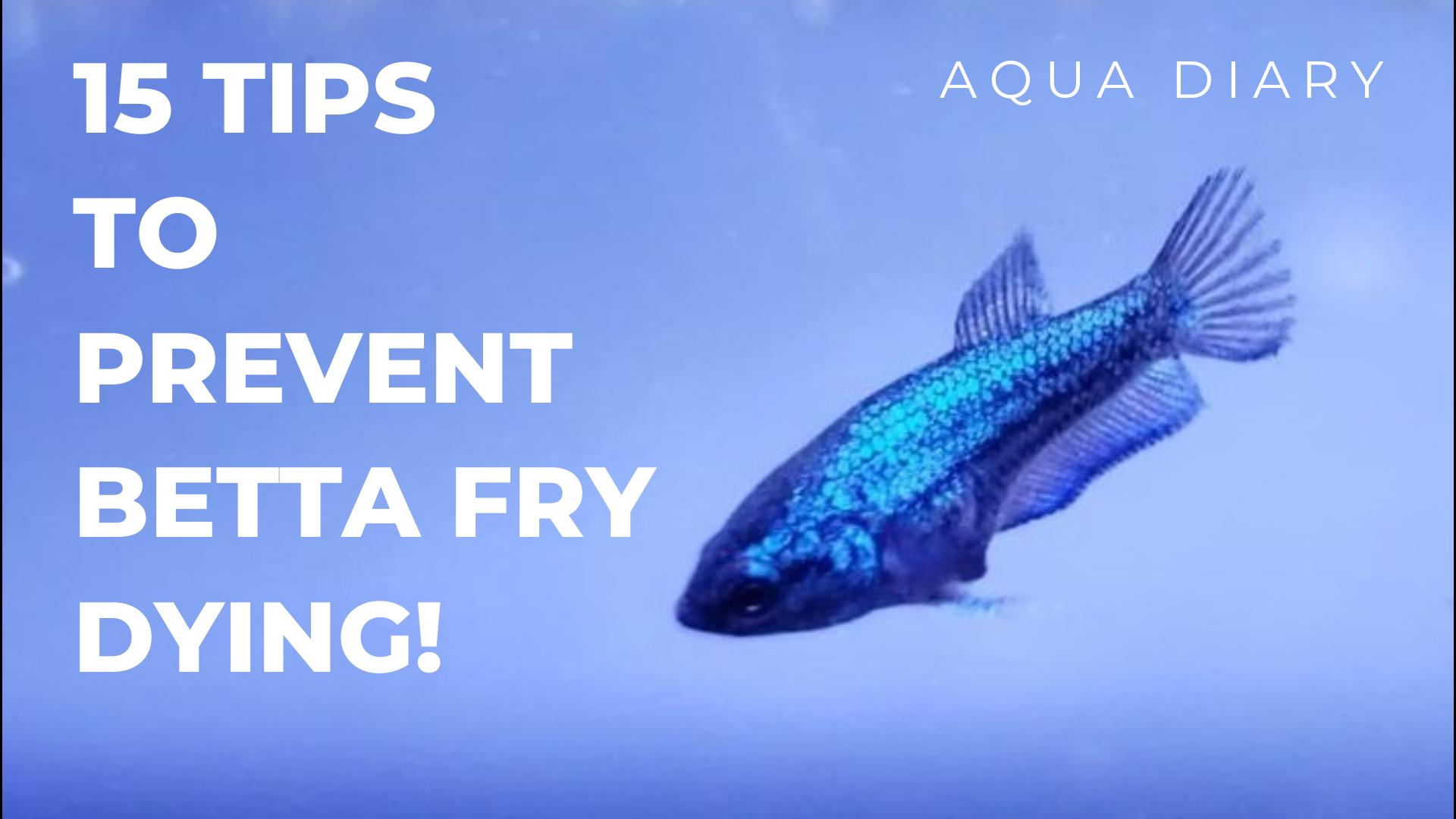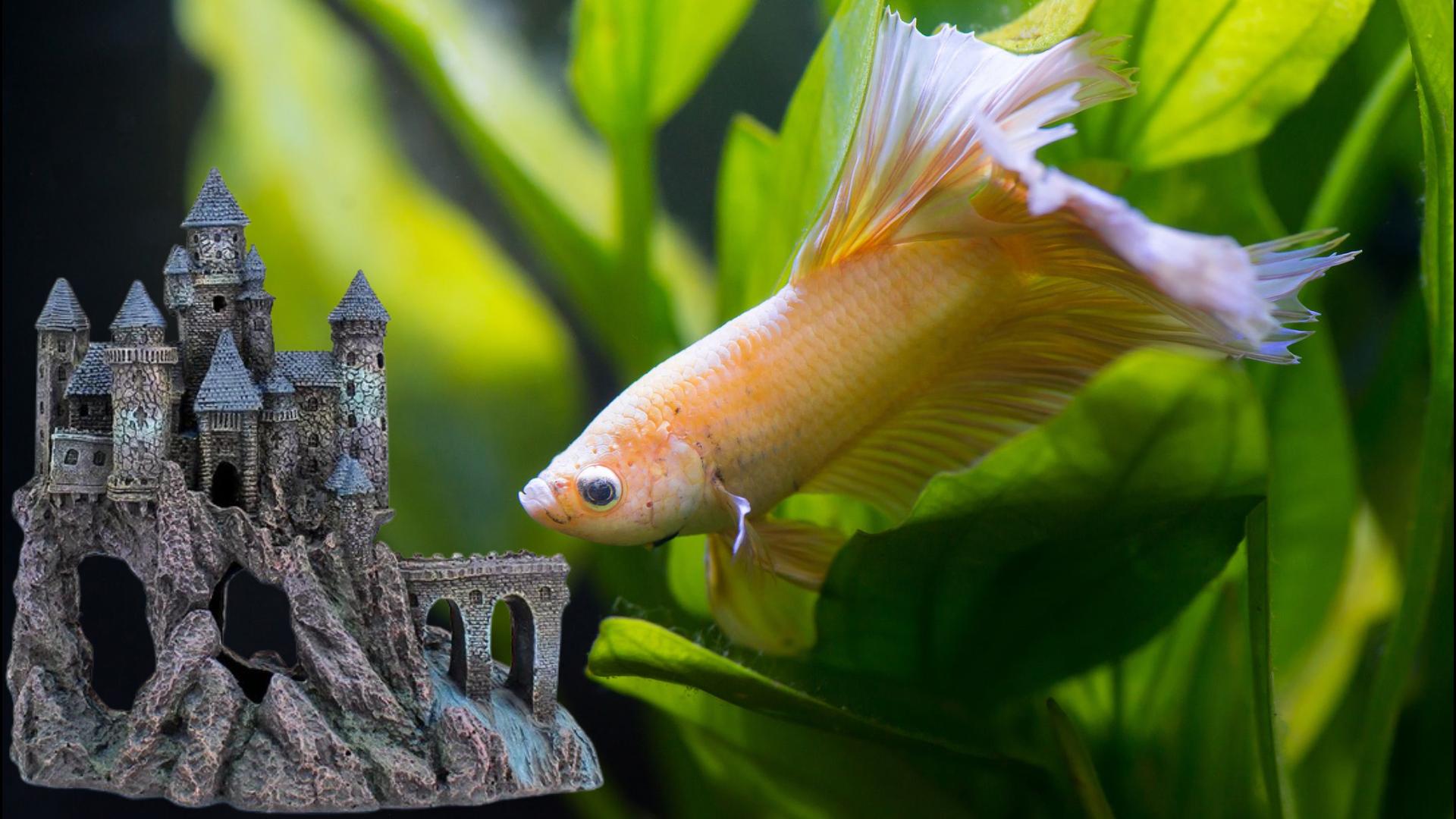Guppies are one of the most popular and colorful freshwater fish in the aquarium hobby. Their colorful body and flowing fins set them apart from other fish. Guppy color development is influenced by genetics and environmental factors like water temperature, diet, light and a few others.
Understanding these factors is crucial to improve their guppy color and create a visually stunning aquarium.
How do guppies get their colors?
Guppies have four major color cell types: yellow, red, reflective, and black. These color cells are derived from neural crest cells during the early stages of fry development and move to different locations in their body.
The distribution, density, size, shape, and arrangement of these color cells create unique patterns and colors in guppies.
In addition to genetics, there are also a few hormones that affect guppy coloration. The most critical hormones are thyroid hormone, melanin-concentrating, and melanocyte-stimulating hormones.
These hormones can be affected by temperature, light, food sources and stress. This is why keeping a proper tank environment and diet is crucial to enhance guppy color. Let’s look at the top 8 tips for improving guppy color. Here you may find my collection of colorful guppies.
1. Better water condition
One of the most important factors in enhancing guppy coloration is maintaining a clean and healthy tank environment. Poor water quality can cause stress, lead to loss of color and other health problems.
Providing fresh, clean water is essential for their health and coloration. Poor water quality can stress your guppies and make them lose their color or become more susceptible to diseases. The pH, hardness, and temperature of the water can also affect your guppys’ color.
Perform a weekly water change of at least 40% to ensure good water quality. Consider adding a proper filtration system with biofilter media to keep the water clean and safe from harmful toxins like ammonia and nitrite. You can also add plenty of live aquatic plants to your guppy fish tank to ensure enough oxygen.
Keep your guppy fish’s water temperature between 72 to 82 degrees Fahrenheit. You should keep the pH of your water between 6.7 and 7.8. Make sure you use the right water conditioner and test kits to monitor the condition of the water in your aquarium.
2. Feed quality food
Guppies’ bright color comes from skin pigments known as carotenoids. These pigments are not synthesized by guppies but obtained from their diet.
Therefore, feeding your guppies a varied and nutritious diet that contains carotenoid-rich foods, such as algae, spirulina, shrimp, and krill, can enhance the expression of orange and red pigments in guppies. Guppies need a variety of nutrients to maintain their coloration, and a lack of specific nutrients can fade their colors.
Choose high-quality fish food with essential vitamins, minerals, and protein. You can also add fresh or frozen foods to their diet, such as brine shrimp or bloodworms, to provide additional nutrients.
In my experience, there is no one miracle food that brings out the best colors in guppy fish. Instead, a balanced and varied diet that meets all of your guppy’s’ nutritional needs is the best approach to promoting optimal health and coloration.
3. Proper Tank Light Improve Guppy Color
The type and intensity of light in your aquarium can also affect how your guppies show their colors. Natural sunlight is the best source of light for guppy coloration, as it provides a full spectrum of wavelengths that reflect off the iridophores and enhance the carotenoids in the skin.
However, if you don’t have access to natural sunlight, you can use artificial lights that mimic natural daylight. In such cases LED lights or fluorescent tubes works well. Avoid using lights that are too dim, too bright, or have a single wavelength, as they can distort or wash out your guppies’ natural colors.
4. Maintain the Male-to-Female Ratio
Another critical thing to remember is maintaining a male-to-female ratio. If you want a peaceful tank and reduced aggression, keep more females in your tank than males. If there are less females than males, the males will constantly chase the lone female, causing her stress and making her prone to diseases.
It’s best to keep guppies in a ratio of 1 male to 2 females. This reduces stress among female guppies from being chased by males.
Usually, I pick a couple of the best males and keep them with 4 to 5 females. This will bring out their best. Also its critical to identify when female is about to give a birth and move them to separate container for labor period.
This is critical steps to save the frys and help female’s health. The post about How to know Guppy is about give Birth? would help better.
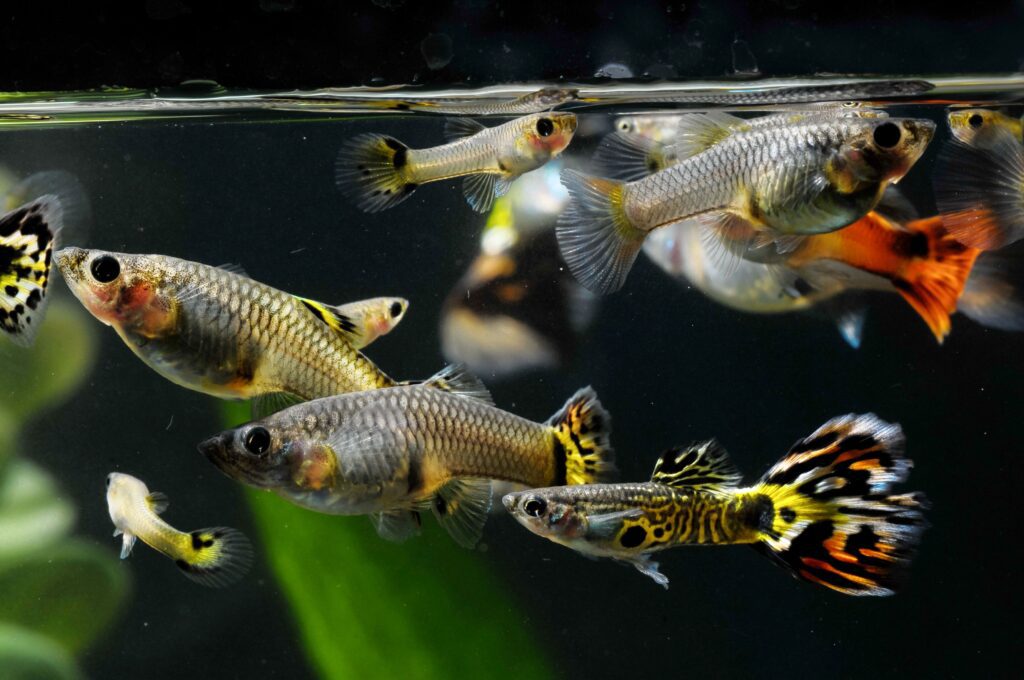
5. Choose Colorful Tankmates
Guppies are peaceful fish and do great with other peaceful fish in a community tank. Adding aggressive fish to your guppy tank will make your guppies suffer constant stress from being chased. You should avoid adding aggressive fish like angelfish and betta fish to your guppy tank. Stress can cause guppies to lose their coloration.
Avoid stressing your fish by keeping them in a suitable environment and not overstocking the tank. In my experience, community tank fish like neon tetras, platy, shrimp, Corydoras catfish, cherry barbs, and rummy-nose Tetra do great.
In general, Betta fish are aggressive against guppy. But if you are interested to know more on how to keep them together without much issues, How to keep Guppy with Betta fish? would help.
6. Add Indian almond leaves for Guppy Color.
Adding Indian almond leaves to your aquarium is a secret way to enhance your guppy color. I can’t stress this enough—I always add Indian almond leaves to my guppy tanks, especially when preparing them for display or show.
I keep them in a tank with almond leaves for a couple of weeks, which brings out their best health and color. Many Asian breeders follow this process to achieve the best guppy colors for their fish. If you haven’t tried it yet, I highly recommend it.
However, be aware that almond leaves will turn your water brown, so be sure of what you want to achieve.

7. Feed Them Colorful Food
It might sound crazy, but feeding colorful food can enhance your fish’s colors. In reality, it’s all about providing your guppies with high-carotenoid fish foods.
Carotenoids are pigments found in plants algae and photosynthetic bacteria, producing bright yellow, red, and orange colors in plants, vegetables, and fruits. Feeding your fish food that contains carotenoids will enhance their coloration, especially in red, yellow, and orange hues.
One simple technique is to dry small pieces of carrots in sunlight for a few days and then powder them to feed your fish.
Additionally, there are several commercial guppy foods available that contain carotenoids, which will enhance your fish’s color as well. I have added a few product recommendations in the comments based on my experience—give them a try! Buying through my links supports the channel, and I get a small affiliate commission from Amazon. It’s a great way to support our channel.
8. Things That Doesn’t Matter
It’s time to discuss things that don’t enhance your fish’s color. One of the most common misconceptions is that guppies change their color to match their environment.
Guppy coloration is determined by genetic factors, water quality, lighting, and food sources. They cannot change guppy color to match your tank background, no matter how vibrant it is.
Additionally, all guppies of the same strain will share certain physical characteristics, such as body shape and fin size. However, guppy colors and patterns can vary significantly, even among siblings. This variation is due to complex relationships between genetic factors, which is a topic for another day.
Can Guppies And Bettas Live Together?
Can guppy fish peacefully live with betta? How to avoid them picking on each other’s beautiful fins? In today’s post, I will discuss secrets to keep them and the same tank with the things we should be careful about.
Can guppies live in Betta fish tanks?
Technically, both fish are well-suited to co-existing since they share similar tank requirements. Betta fish prefer water temperatures from 76°F to 82°F, while guppies prefer temperatures from 74°F to 82°F. The ideal pH level for guppies falls between 6.8 to 7.5, whereas for betta fish, it’s 6.8 to 7.6.
Both share similar tank conditions which makes it possible for them to live together in the same tank.
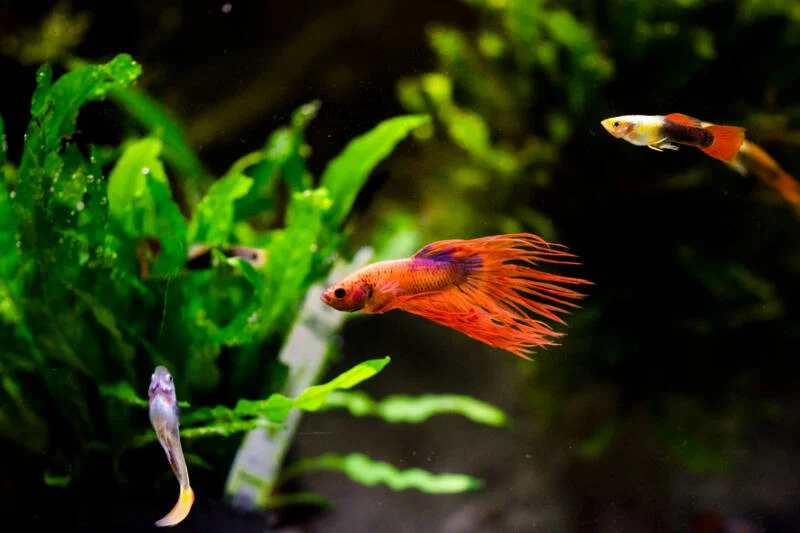
Is it safe to keep guppy with betta fish?
Fancy Male Guppy fish have long colorful fins like Betta fish. This similarity can cause problems if guppies and male bettas are kept together. It triggers a betta fish’s instinct to attack a guppy fish.
Sometimes even guppies nibble at your betta fins and damage them. Also, since guppies and bettas are top feeders, food dropped on the tank floor may remain unattended.
Can a betta fish and a guppy share the same food?
Betta fish have a carnivorous diet and need high-protein meat-based food sources. On the other hand, guppies are omnivores, which means they need a mix of animal and plant-based foods to maintain proper health.
But there are some foods suitable for both fish. High-quality pellets formulated for tropical fish can be fed to both fish. These foods often contain a balance of protein and other nutrients that both bettas and guppies require. Also, both fish love infusoria, brine shrimp, and bloodworms. Guppies And Bettas Live Together
How many bettas can you keep with guppies?
It’s generally advised to avoid housing more than one male betta in the same tank. Selecting between flashy male guppies and less colorful females can be a decision point. There are some benefits to considering female betta fish with guppies. Female bettas have smaller fins and tails that are less likely to be damaged, reducing fin rot risk.
Additionally, female bettas tend to be less aggressive than their male fish which makes them a potentially smoother addition to the tank. Keep in mind that bettas are territorial, and they might perceive guppies as threats, leading to aggression.
If you’re housing guppies with a betta, it’s advisable to have a group of guppies rather than just one. Creating a colony can prevent your betta from targeting a single fish and reduce potential issues.

If you’re considering male betta fish, Aqua Diary recommends having only one male betta fish in each tank. As a rule of thumb, you want one gallon of water for each guppy fish in your tank.
When it comes to female betta fish, it’s recommended to keep 1 fish for every 4 to 5 gallons of water. Taking this into account, you could potentially house 3 to 4 female betta fish along with 4-5 guppy fish in a 20-gallon tank. And for every additional 5 gallons, I’d suggest adding only 3 guppies or 1 female betta fish. Keeping this ratio will ensure your fish have plenty of room to stay out of each other’s ways.
Normally when housing guppies you should have 1 male for every 3 females. This will reduce female guppy fish stress. Personally, I wouldn’t choose anything smaller than a 10-gallon tank for a community tank setup.
Will betta fish kill guppy? Guppies And Bettas Live Together
Betta fish can sometimes be aggressive and kill guppies, especially if they see them as rivals or intruders on their territory. However, the outcome depends on various factors, including betta fish temperament and tank conditions. To prevent betta fish from harming guppies in a community tank, ensure you have a sufficiently large aquarium with hiding spots, plants, and lots of swimming space.
This will create a less stressful tank environment. Keep a close eye on your tank, monitoring for any signs of aggression such as fin nipping or chasing. If needed, separate the bullying fish from the community tank. Can Guppies And Bettas Live Together? 10 Tips.
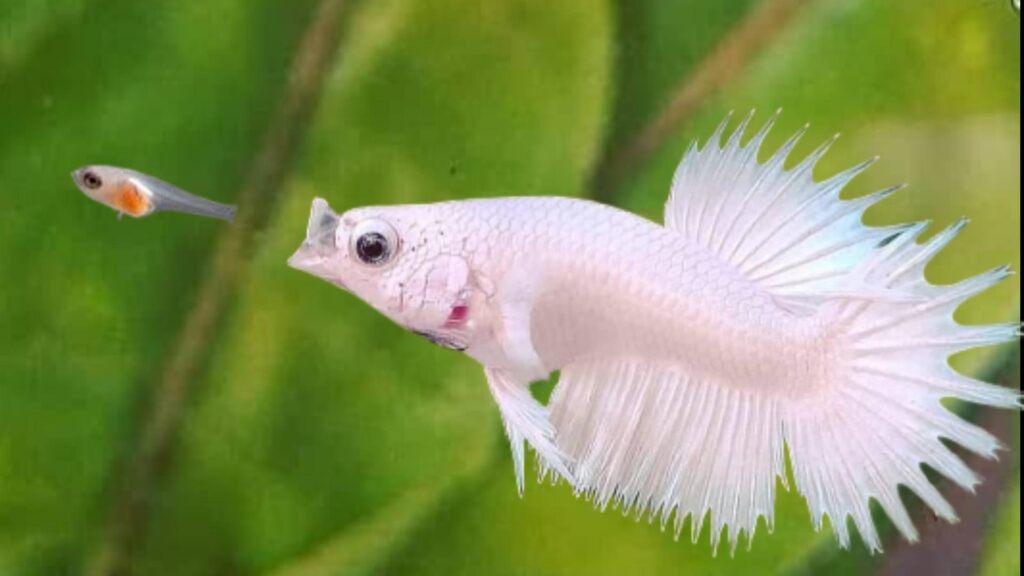
What Part Of The Tank Do Guppies Occupy?
Guppies tend to occupy the middle and upper portions of the tank. They frequently swim around these areas, which can cause problems if they swim past your betta fish’ territory. However, once your betta establishes its own space, the guppies are less likely to enter there unless there’s food present. \
Do betta fish eat guppy frys?
Betta fish have a natural instinct to consume small moving prey, including guppy fry. The tiny fry size attracts betta fish. This behavior is common, and it’s something to consider when keeping both fish together. In the past, I had a female betta community tank with guppy fish.
I often left the fry as treats for the bettas and guppy fish. I will be able to control the population of guppy fish in this way, since female guppy fish produce fry almost every month.
If you want to reduce the risk of guppy fry becoming a snack for your betta, you might want to provide hiding places for the fry to survive. Dense plants, floating plants, or even separate breeding tanks can protect the frys.
How big should a guppy and Betta fish community tank?
The right tank size is crucial to a successful community tank. A too-small tank can lead to aggression and health issues.
When considering the coexistence of bettas and other fish like guppies, Bigger tanks provide more space for each fish to establish their territory and minimize fights. As a baseline, a tank of at least 10 gallons is necessary for a setup containing one betta and up to four guppies.
However, a larger tank, around 30 gallons or more, would be even better for creating a stress-free environment that promotes peace in your tank.
How do you feed your Betta and Guppy in the Community tank?
Guppies tend to have an enthusiastic appetite and can quickly finish any food introduced into the tank. However, betta fish are slow eaters and tend to nibble on available food. This can lead to a potential issue, as guppies may consume all the food rapidly, leaving the betta with little to eat.
Can guppies nip betta fish fins?
Guppies are generally not aggressive fin nippers towards betta fish. However, guppies bite betta fish fins, especially if they are long or colorful. It’s critical to closely monitor your guppies and betta fish. If you notice any signs of fin nipping or aggression from either fish, take precautionary steps.
Providing hiding spots, plants, and other structures in the tank can protect and reduce fin-related issues, or move bully fish out of the tank. Can Guppies And Bettas Live Together? 10 Tips
Can you keep guppy and betta together?
- Your betta’s temperament is the key determinant of successful cohabitation.
- Pick a less aggressive betta and closely monitor their behavior until they settle down.
- Add all the guppy fish first, and introduce the betta fish last to avoid the betta claiming the territory.
- It’s crucial to provide the most spacious tank possible, as a larger environment reduces territorial behaviors among both species.
- Avoid guppies resembling male bettas and consider pairing female guppies with female bettas.
- A tank with ample space is necessary; a 10-gallon tank is the minimum size I recommend. For extra safety, add 5 gallons of water for every 3 guppies or 1 female betta fish.
- Be attentive to your tank dynamics; if guppies consume betta food or nip fins, consider isolating the problematic guppy.

